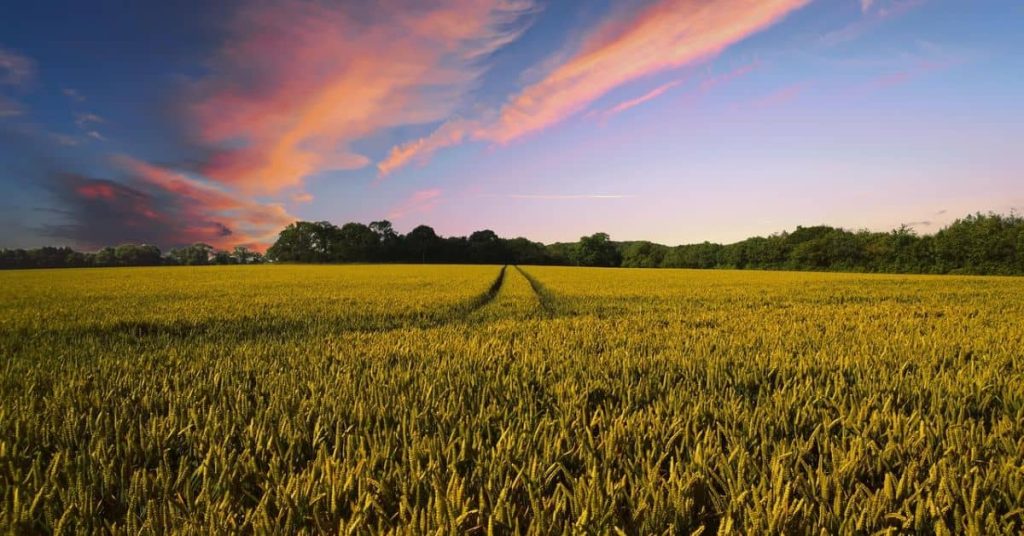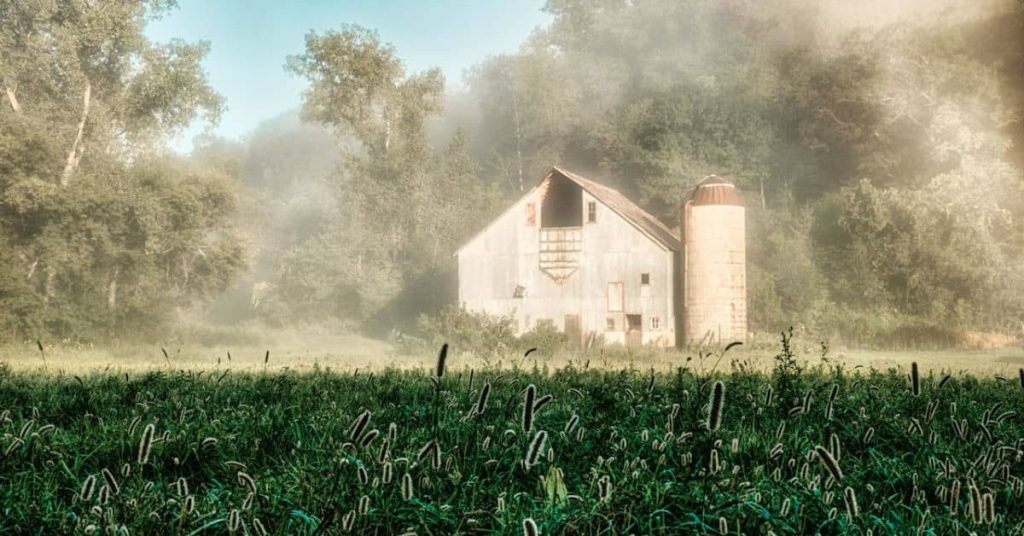Late summer is one of those seasons that sneaks up on you. You think you’re coasting after the rush of spring and early summer, but then August hits, and suddenly everything’s coming in at once, animals need extra care, and the heat just won’t quit. It’s a time of big harvests, yes, but also big decisions.
FAQs: Homesteading in Late Summer
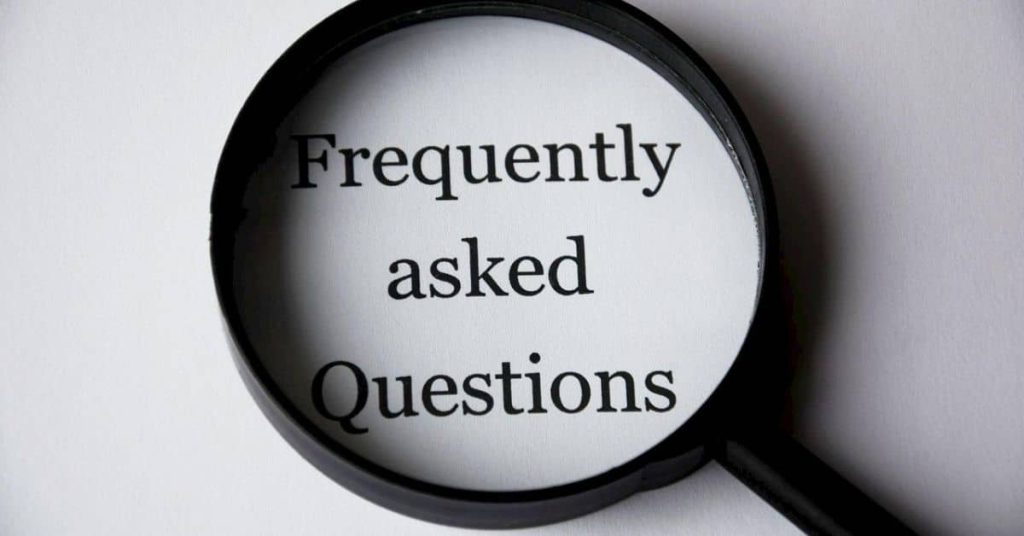
Before moving on to the complete guide, if you’re just looking for quick answers, this FAQ covers the most common questions about homesteading in late summer.
Q1: What can I still plant in late summer in the U.S.?
You can still plant fast growers like radishes, bush beans, lettuce, kale, and turnips, especially in zones 7 to 10. In cooler states, stick to greens and anything labeled “quick harvest.”
Q2: When should I stop planting for fall?
That depends on your USDA zone. A good rule of thumb is to count back from your first frost date, add a week or two for safety, and plant anything that matures before then.
Q3: How do I keep chickens cool during a heatwave?
Give them shade, fresh water, and good airflow. Frozen water bottles in their coop or shallow pans to wade in can help on the hottest afternoons.
Q4: Is it worth canning in late summer or just freezing stuff?
If you’ve got the time, canning is great for shelf-stable food, but freezing is faster. I usually freeze berries and soft veggies, then save canning for tomatoes and pickles when it cools off.
Q5: Do I need to do anything before fall hits my garden?
Yes, pull dead plants, toss some compost on open beds, and start seeding fall crops if you haven’t already. Even a little prep now will make fall much easier.
What Late Summer Really Feels Like on the Homestead
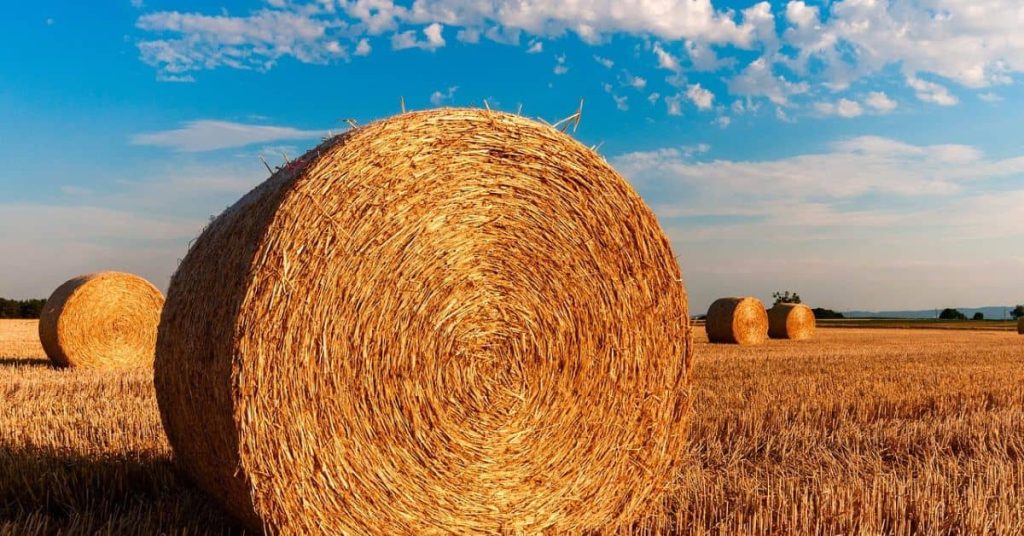
Do you plant one more round of veggies? Do you pull out what’s done and prep for fall? Or do you just try to keep everything alive until the first cool front rolls in?
That in-between feeling is what makes homesteading in late summer its own unique challenge, and honestly, its own reward too. It’s not quite the end of the season, but it’s definitely not the start. It’s where planning, patience, and practical choices come together.
In the sections below, I’ll walk you through what late summer really looks like on the homestead: the heat, the harvests, the burnout, and how folks all across the country are adjusting their rhythms to make it work. Starting with the big question so many of us ask around this time…
What should I do on my homestead in late summer?
That’s the question I ask myself around August 1st, every year. Right about when the squash vines start looking crispy and the chickens start panting in the shade. Homesteading in late summer doesn’t have a neat to-do list: it depends on your land, your region, and how worn out you’re feeling by this point in the season.
Some days, the answer is to stay on top of the watering, especially if you’re in a place like Oklahoma or Arizona where a late summer heatwave can fry a garden in two days. Other times, it’s cleaning out a bed that got overrun with weeds and throwing in a late crop of bush beans just to see if they’ll grow. They usually do, by the way, if you’ve got about 50 days left before first frost.
So if you’re standing on your porch wondering, “Is it too late to start something?”, you’re not alone. The answer’s probably “Nope. Not yet.”
The August reality check: heat, harvest, and burnout
August is beautiful, but it’s brutal. Everything is producing at once: tomatoes, okra, cucumbers, and it’s easy to feel like you should be doing everything at once, too. That’s the burnout trap. One year I tried to can tomatoes, dry herbs, plant fall crops, and build a new compost bin all in the same weekend. I ended up with moldy tomatoes and a sore back.
These days, I keep a dry-erase board on the fridge with three things max. Water the garden, check on the hens, freeze the extra basil. Anything else is extra credit.
A neighbor of mine in Missouri says, “If it doesn’t get done in August, maybe it didn’t need to.” She’s not wrong.
A look ahead: preparing for the shift to fall
Late summer is when you start planting with September in mind. Even if it’s still hot, your daylight’s starting to shorten. In Tennessee, I usually aim to have my fall greens in the ground by mid-August. That gives them enough time to get established before the cool-down starts.
Ask yourself:
- Do I have space to plant something new?
- Can I rework a bed that’s done producing?
- Is my soil too tired, or can I just top it off with compost?
And if you’re not sure what to plant, start small. Lettuce, radishes, even beets if your zone allows. Homesteading in late summer means looking past the heat and setting the stage for easier harvests later on.
Voice from the field: what other homesteaders are saying
I heard from Jamie up in Minnesota who said she uses late summer to “clean up what I didn’t finish in July.” For her, that’s pruning the berry bushes and setting traps for the rabbits that got into her greens.
Meanwhile, down in Georgia, Marcus told me he’s already pulled up his melons and has turnips going in their place. He said, “Late summer’s my reset button. I can’t keep up with everything, but I can restart one or two beds.”
It’s encouraging to hear how folks adapt in their own regions, with different weather, soil, and energy levels.
Homesteading in late summer 2021 vs 2025: what’s changed
Back in 2021, I remember more folks were just getting into homesteading. Seed companies were sold out, and everyone was trying to grow everything. There was a lot of excitement, but also overwhelm.
By 2025, I see more people focused on sustainability. Not just growing food, but keeping animals cool, storing food for winter, and managing water better. Folks are smarter about pacing themselves now. And honestly, that shift has helped a lot of us stick with it for the long haul.
So as you read through these 11 tips, just remember: homesteading in late summer isn’t about perfection. It’s about showing up for your land and doing what you can with what you’ve got.
And some days, that might just mean watering the beans and calling it good.
What Counts as Late Summer, Anyway?

If you’ve ever found yourself wondering whether it’s too late to plant something or if you should already be thinking about fall, you’re not alone. One of the most common questions I hear is, “What even counts as late summer?” And the truth is: it depends. Your growing zone, climate, and even what your land’s been through that year all play a part.
Homesteading in late summer isn’t a fixed window on the calendar. In some places, it’s already time to clean up the beds and start thinking about cool-season crops. In others, you might still have enough heat and daylight to squeeze in a round of quick growers. This section breaks down how to figure out where your late summer begins and what it means for your homestead.
“What is considered late summer for planting?”
Late summer usually starts in late July or early August, depending on your zone. But that’s not a hard rule. If your area sees its first frost in late October, your late summer planting window might stretch well into August. If you’re farther north and frost comes early, that window’s much shorter.
The trick is to count backwards. Most seed packets list “days to maturity,” so grab a calendar and your first average frost date and do a little math. If your seeds need 60 days and you’ve got 65 until frost, you’re still in the game.
I wasn’t sure this would work one year with beets, but I planted them in the first week of August anyway. They made it just under the wire: smaller than spring beets, but still good eating.
Check the USDA Zone First
The first step in knowing when late summer starts in your area is finding your planting zone.
The USDA Plant Hardiness Zone Map gives you your average lowest temperatures and frost dates based on your zip code. That info helps you decide what you can still plant and when.
Zones 3 to 5 need to think earlier. For folks in places like Montana or northern Michigan, late summer might start as early as mid-July. For Zones 8 to 10, think Texas, the Gulf Coast, or southern California, August is still hot and growing strong.
“When should I stop planting?” by region
Once you’ve got your zone, it’s easier to make decisions. But here’s a rough breakdown:
- Zone 3–5: If you’re in the northern states, August is probably your last real shot at fast-maturing crops. Think radishes, salad greens, maybe a few bush beans.
- Zone 6–7: This includes parts of the Midwest and upper South. You’ve got a bit more wiggle room. Root veggies, leafy greens, and even a second round of squash can still go in.
- Zone 8–10: In hot climates like Texas or the Florida panhandle, you’re still deep in the growing season. You might be prepping beds for fall, but it’s not too late to plant heat-tolerant crops or start seeds indoors for cool-weather plants.
Let’s break this down a little further with some region-specific advice:
Texas late summer gardening tips
If you’re in central or south Texas like me, the trick is working with the heat, not against it. Okra, cowpeas, and sweet potatoes thrive through August. But for anything tender, like lettuce or kale, you’ll want to wait until the last week of the month or early September. Start seeds in the shade or indoors.
One trick I picked up from an old timer at the feed store: plant a few green bean seeds every 10 days starting August 1. By the time the weather turns, at least one of those batches usually gives you a surprise harvest.
Florida fall planting schedule
In Florida, late summer is still full-blown summer. If you’re along the Gulf Coast, you can get away with planting tomatoes, peppers, and eggplant in early August for a late fall harvest. Just keep an eye out for pests: they thrive in the humidity too.
My friend Lena in northern Florida starts her collard greens on her screened porch in trays and transplants them once the heat breaks, usually early September. She swears by neem oil for managing whiteflies and cabbage worms.
Northeast preserving apples in fall
For homesteaders in the Northeast, late summer doesn’t mean planting: it means prepping for apple season. It’s a good time to prune back berry canes, start cleaning up garden beds, and get canning supplies ready. If you’re in places like upstate New York or Vermont, you may still have time for greens or peas in early August, but frost will sneak up fast.
I wasn’t sure I’d get much from my fall carrots last year in Pennsylvania, but I gave them a try. They took forever to germinate, but the cool September weather sweetened them up just right.
So before you decide late summer’s too late to do anything, take a step back and check your zone, your weather, and your energy level. Homesteading in late summer is less about hard rules and more about reading your land, and doing what’s reasonable for you.
Tip #1: Know What to Plant (And What Not To)

Knowing what to plant in late summer can make or break your fall harvest. The heat’s still hanging around in many parts of the country, but daylight’s slipping away faster than you think. Homesteading in late summer is a balancing act between what’s still thriving and what needs to get in the ground fast if you want to see results before first frost.
You don’t need a full replant of your entire garden. A few strategic crops can carry you through the tail end of summer and set you up nicely for fall.
“What do you plant at the end of summer?”
A good first step is to ask yourself how much time you’ve got until your first expected frost. Count back from that using the “days to maturity” listed on your seed packets. That number will help you know what’s even worth planting.
In Arkansas, I usually figure I’ve got until about mid-October. That gives me time for:
- Green beans (bush varieties work best for speed)
- Zucchini (smaller, fast-growing varieties)
- Arugula and mustard greens
- Fall peas
I wasn’t sure those beans would sprout in the heat one year, but I soaked the seeds overnight and gave them a shady start. They popped up quick, and I got a decent crop before the cold rolled in.
Best crops for late summer planting
Here are a few good bets across most growing zones:
- Fast greens: arugula, spinach, lettuce, mustard
- Roots: radishes, carrots, beets (if your soil’s loose and not bone-dry)
- Legumes: bush beans, southern peas, yardlong beans
- Fall herbs: cilantro, dill, parsley (great in pots or tucked into open spots)
Ask yourself: “What will actually grow quickly where I live?” That’s the key.
What can I plant in late summer that still grows fast?
If you’re tight on time, stick to these quick growers:
- Radishes: Some are ready in 25 days.
- Spinach: Especially good if your nights are starting to cool.
- Leaf lettuce: Skip the head varieties; go for cut-and-come-again types.
- Turnips: Especially for folks in zones 7 and up.
My neighbor in Kansas, Rosie, swears by Tokyo Cross turnips planted in late July. She says, “They grow like weeds, and even the greens are good in a skillet.”
Buy late summer vegetable seeds: what’s still available
Even if it’s late in the season, you can usually find a few good seed options online or at local feed stores. Look for labels like:
- “Fast-maturing”
- “Early harvest”
- “Fall crop”
Texas A&M AgriLife Extension has great region-specific planting charts if you’re in the South. Your local extension office might offer a downloadable calendar or even a phone number to call if you want real-time advice.
If you can’t find what you want in packets, try swapping with a friend or checking seed-saving groups. Last year, I traded a jar of pickled okra for a handful of beet seeds someone had saved, and they grew just fine.
Homesteading in late summer doesn’t mean starting from scratch. It means choosing what still has time to thrive, letting go of what won’t, and making small moves that pay off later. Even if it’s just a row of beans or a bed of greens, that little bit can keep your garden going and your pantry fuller when the weather cools.
Tip #2: Give Your Garden a Shade Break
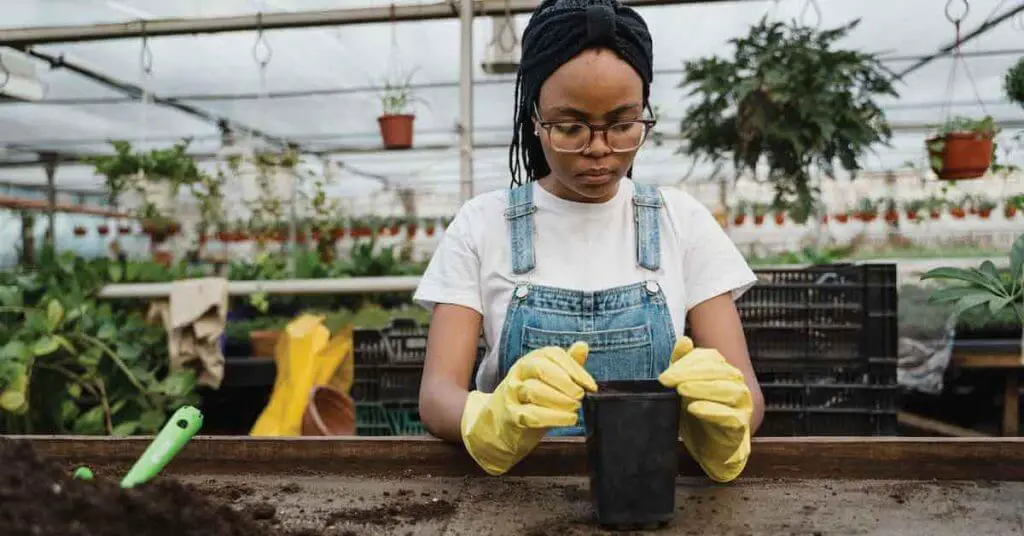
Late summer heat can wear a garden out fast. Even if your plants survived the midsummer stretch, they might be limping by now. Tomatoes start to stall, lettuce turns bitter, and anything tender just bakes. Homesteading in late summer means finding ways to work with the heat, not fight it, and sometimes, the best thing you can do is give your garden a little shade.
Affordable shade cloth for gardens
You don’t need fancy equipment to keep your plants from getting scorched. Shade cloth is one of those things that seemed optional to me, until my peppers got sunburned two years in a row. Once I started using it, I noticed less wilting and better fruit set, especially on tomatoes and squash.
Here’s what to look for if you’re shopping:
- 30% to 50% shade cloth is usually enough for veggies.
- Go with breathable material to avoid trapping too much heat.
- Look for grommets or use clothespins to attach it easily to T-posts or PVC hoops.
Feed stores or online garden suppliers usually carry it in bulk. If you’re on a tight budget, sometimes you can find offcuts or old banners at hardware stores: they work just as well in a pinch.
Homemade shade hacks that worked for me
I’ve used everything from old sheets to burlap sacks when I couldn’t get my hands on real shade cloth. One summer, I strung up an old bedsheet between two T-posts to shield my cucumbers. It looked a little odd, but it saved the vines.
Some ideas that have worked around here:
- Sheer curtains from thrift stores (especially white ones)
- Cheesecloth for delicate greens
- Mesh laundry bags opened and stretched across hoops
- Wooden crates placed at an angle to create afternoon shade
Ask yourself: What’s sitting around that I can use right now to block this heat?
When to use shade cloth vs. pulling a crop early
This one’s a judgment call, and it depends on the plant. Some crops will bounce back with a little shade, while others are probably done for the season.
Use shade cloth if:
- Your plants are still flowering or producing.
- Leaves are scorched but the plant is otherwise healthy.
- You plan to keep the crop going into fall.
Pull the crop if:
- It’s already bolted (like lettuce or spinach).
- The roots are rotting or pest damage is too far gone.
- You’re trying to make space for fall planting.
I wasn’t sure whether to keep my kale going last August: it looked pretty rough, but I gave it one more week under shade and a heavy mulch. It perked up enough to last through the first few fall frosts.
Homesteading in late summer means knowing when to push a little and when to back off. A little afternoon shade can mean the difference between one more harvest or a bed of crispy leaves. It doesn’t have to be perfect. It just has to work well enough to get your garden through the heat.
Tip #3: Keep Your Chickens and Livestock Cool
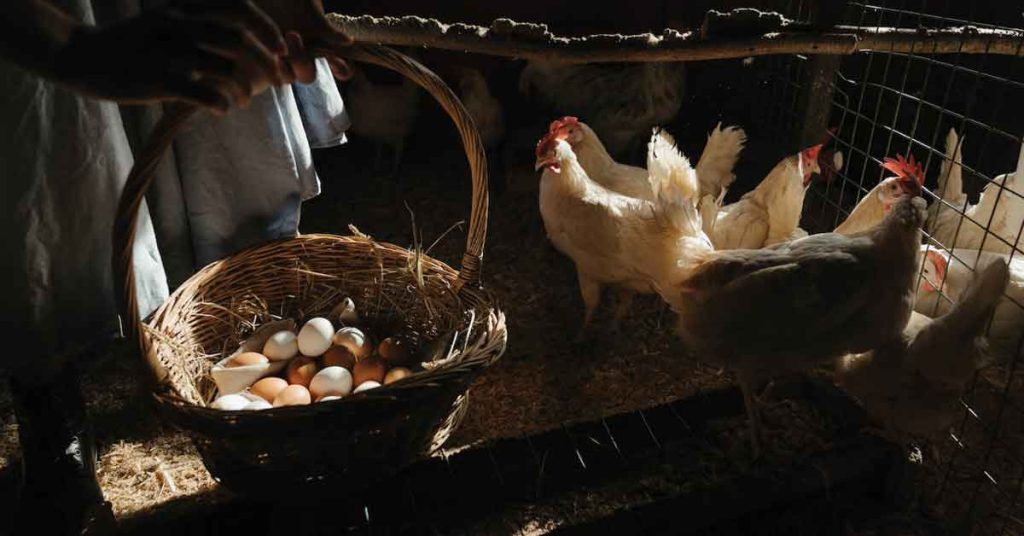
Animals feel the heat just as much as we do, maybe more. When you’re homesteading in late summer, you’re not just managing your garden, you’re also trying to keep your chickens from panting themselves silly and making sure your goats don’t knock over every water bucket they find. It’s a sweaty, high-stakes season for livestock, especially if you’re in the South or Midwest.
This tip is all about staying ahead of the heat, with real strategies that work on small farms and backyard setups alike.
Managing livestock in hot weather
If your animals have fur, feathers, or a black coat, late summer can be brutal. Shade and fresh water are non-negotiables. I learned that the hard way after one of our rabbits got overheated in early August. We had to bring him inside for a day just to get him to cool down.
Here’s what I try to keep on hand:
- Extra water pans, not just one per pen, but backups in the shade.
- Fans, even a small plug-in box fan pointed into a coop or goat shelter helps move air.
- Frozen water jugs in their bedding or next to their nesting boxes.
- Shady shelter, this can be a tarp over a lean-to, a makeshift roof, or even a scrap of plywood between trees.
Ask yourself: Are my animals getting any breeze? If the answer is no, something needs to change.
How to keep chickens cool in summer
Chickens struggle in high heat, especially heavy breeds like Orpingtons and Brahmas. When I see my hens holding their wings out and breathing through their beaks, I know it’s time to step in.
Here’s what’s worked for me:
- Electrolytes in their water, just a pinch of salt and baking soda does the trick if you don’t have packets.
- Misting the ground in their run a few times a day to cool the area (never mist the birds directly).
- Cold snacks, I freeze watermelon rinds, chopped grapes, or corn and scatter them as a midafternoon treat.
One summer in east Texas, I set up a small kiddie pool just outside the run. The hens wouldn’t stand in it, but they’d gather near the edge to peck the cool water and rest in the shade it created. It helped more than I expected.
Tips for keeping animals cool during heatwaves
Heatwaves are a different beast. That’s when I run through my checklist twice a day.
- Are the water buckets full and in the shade?
- Is there any breeze reaching the animals?
- Do I have ice jugs in the rabbit hutch or coop?
- Have I checked for signs of heat stress: lethargy, heavy breathing, drooling in goats?
In July 2022, we had five straight days over 105°F here. My goats spent most of the day lying under the barn awning with fans going, and I brought them cold watermelon cubes in the evening. It wasn’t fancy, but it kept them comfortable.
What to have on a homestead to beat the heat
There’s no one-size-fits-all kit, but here are the tools I’d never want to be without:
- Buckets with lids to store extra water away from the sun
- Misters, even simple hose-end types
- Tarps and rope for emergency shade
- Old towels you can soak and hang for evaporative cooling
- Thermometer in the coop or barn so you’re not just guessing
Even if you’ve only got a few animals, prepping for the heat pays off. And honestly, it’s easier to relax in the evening when you know everyone’s made it through another scorcher.
Homesteading in late summer means caring for more than just crops. The animals rely on us, and with a little planning and some creative cooling, we can get them through the worst of the season.
Tip #4: Start Prepping for Fall (Yes, Already)
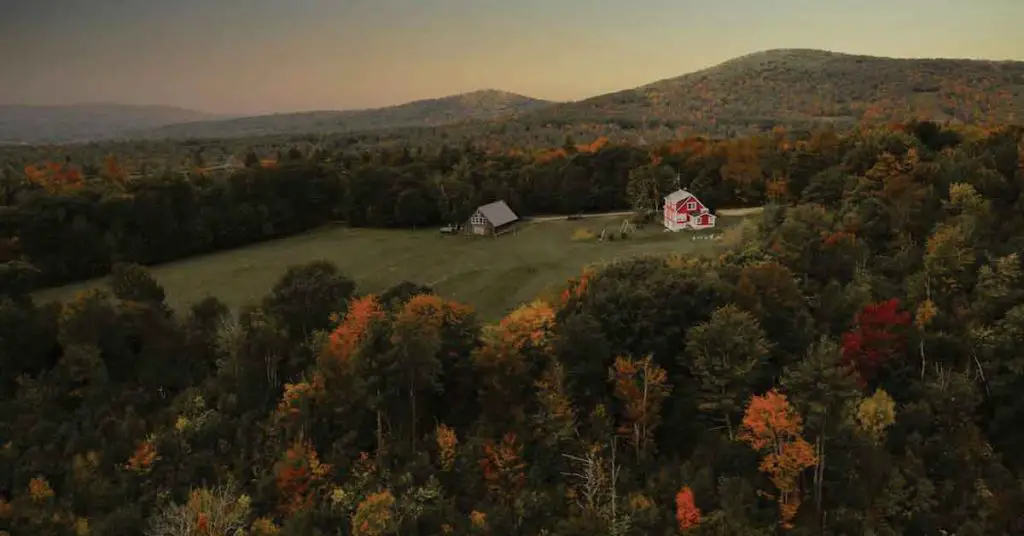
I know what you’re thinking: it’s still blazing outside, and the tomatoes are barely hanging on. Fall feels far off. But if you’re homesteading in late summer, the best time to prep for fall is, well, now. If you wait until the weather actually feels like fall, you’re already behind.
Fall prep isn’t about doing everything at once. It’s about picking a few small, steady steps that’ll help your homestead glide into the next season a whole lot smoother.
How to start a fall garden without getting overwhelmed
Start by looking at what space you’ll have in the next couple weeks. Are your cucumbers on their last legs? Did the squash bug battle leave you a few empty spots? That’s your future fall garden bed.
Here’s what helped me simplify:
- Clear one small bed at a time. I like to do it early morning or after dinner when it’s cooler.
- Add a little compost or worm castings. Even just a trowel-full helps revitalize the soil.
- Soak seeds before planting. Especially helpful in hot zones where the topsoil dries out fast.
One year, I waited too long and tried to rush everything over Labor Day weekend. I ended up planting tired beds with dry soil and got hardly anything to sprout. Since then, I prep little-by-little starting in mid-August.
When to start planting for a fall harvest?
That depends on your zone and your frost date. The rule of thumb is to count backward from your first expected frost using the seed packet’s “days to maturity.” But always give yourself a 7 to 10 day buffer.
If your carrots need 70 days and your frost hits October 20, you want those seeds in the ground by early August. It’s not about hitting it perfectly, just giving your crops a real shot.
A reader from Virginia emailed me last year saying, “I never thought to look at the soil temp. I always went by air temperature. Once I changed that, my fall kale grew twice as fast.” That’s a great tip: soil thermometers are cheap and more reliable than guessing.
How to prepare my garden for fall?
Fall prep means clearing out what’s done, refreshing the soil, and maybe rethinking your garden layout. I ask myself these three questions every August:
- Is this bed still producing, or am I hanging on to it out of habit?
- Can I feed this soil a little now to get better results later?
- Do I want this space for food, cover crops, or rest this fall?
Some folks replant, some rest the soil with mulch or cardboard. There’s no wrong way, just your way.
One thing I tried last year that worked surprisingly well was planting garlic in a tired bed I’d topped with compost. I wasn’t sure the soil had enough left in it, but come spring, those were some of the best bulbs I’d ever grown.
Local extension office gardening tips
Your local extension office is gold this time of year. They usually have region-specific fall planting charts that tell you exactly what to grow and when.
If you’re in Georgia, for example, the UGA Extension posts updated monthly guides. In Utah, they’ve got a calendar that breaks it all down by elevation. Even in smaller states, you can often find a PDF guide or just call and talk to someone who’s lived and grown there for decades.
You don’t have to guess what works. Someone nearby has already figured it out.
Homesteading in late summer isn’t just about surviving the heat. It’s about easing into what’s next. Prepping for fall now means fewer surprises, better crops, and maybe even a little more rest come October. That’s worth starting a few weeks early.
Tip #5: Use What’s Still Growing
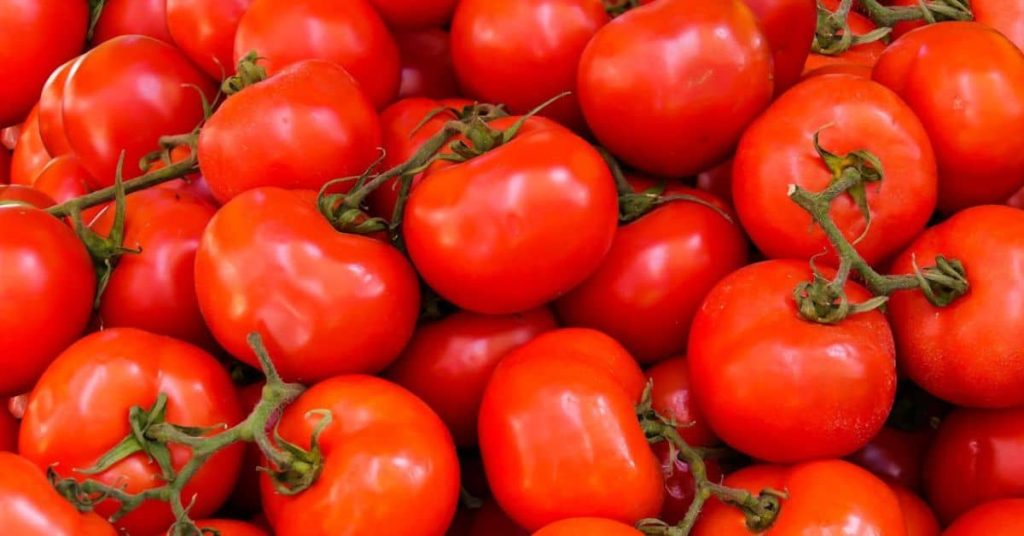
By late summer, your garden might look a little tired, but there’s still plenty growing out there if you take a second look. Maybe you’ve got peppers piling up or a few stubborn squash vines still producing. Don’t let them go to waste. Homesteading in late summer is as much about using what you have as it is about planting new things.
This tip’s all about practical ways to preserve and store what’s still coming in, even if it’s just a little bit at a time.
Tips for preserving summer harvest
The trick with late summer harvests is they come in bursts. You might not have a big canning haul every week, but you’ll have bits and pieces: too many tomatoes one day, a few cucumbers the next, or extra herbs that are bolting in the heat.
Here’s what works well for small batches:
- Freeze chopped veggies in zip-top bags. Lay them flat so they store easier.
- Dry extra herbs in paper bags or on screens in the shade.
- Make a quick pickle with leftover onions, cukes, or jalapeños. No pressure canner needed.
I wasn’t sure freezing diced tomatoes would be worth it, but I’ve used every last one in stews and pasta sauce through the winter. No regrets.
Best ways to store vegetables from the garden
Even without fancy equipment, you can store quite a bit. Ask yourself: What can stay out, and what needs to go cold?
- Cured onions and garlic store fine in a dark pantry or crate with good airflow.
- Tomatoes can ripen on the counter, but not near your stove or window.
- Peppers keep a week or more in the fridge. Chop and freeze any extras before they go soft.
- Zucchini can be grated and frozen for bread or soup.
I’ve also had good luck using stackable bins in a cool basement corner. I keep the sweet potatoes down there once they’re cured and labeled by date.
Best canning supplies for beginners
If you’re just getting started, don’t overbuy. A few basics will carry you through:
- A deep stockpot with a rack
- A jar lifter and funnel
- Half-pint or pint jars (depends on your harvest size)
- Lids and rings
You can always borrow a pressure canner or find one used. I picked up my first one for $10 at a yard sale in Iowa and still use it every fall.
Top-rated dehydrators for home use
Dehydrating’s a quiet way to get ahead of the next season. If your tomatoes are splitting or you’ve got a bumper crop of herbs, it’s a great option.
National Center for Home Food Preservation has solid guides on how to dry everything safely.
Some top-rated models that don’t break the bank:
- Nesco Snackmaster: Good for beginners
- Excalibur 5-Tray: A favorite among longtime homesteaders
- COSORI Food Dehydrator: Gets great reviews and has a timer
I dried cherry tomatoes one August when I didn’t feel like firing up the canner. Tossed them in olive oil and garlic later: they disappeared fast.
State fair canning competition rules (2025 edition)
If you like a little friendly competition, check your state fair schedule. Many have updated canning categories, and you might be surprised what qualifies. Even a simple peach jam or bread-and-butter pickle batch can land you a ribbon.
Some states require USDA-approved recipes or tested processing times. That’s where that National Center link comes in handy.
Ask around: maybe your neighbor’s cousin has won five years in a row and wouldn’t mind sharing her tips.
Homesteading in late summer is about paying attention to what’s still thriving. Don’t overlook that patch of peppers or the last of your basil. Use what you can, store a little, and keep your future self in mind. Those small batches now make for big comfort later.
Tip #6: Forage While You Still Can

There’s a short window in late summer when wild foods are still out there, if you know where to look. You don’t need a deep forest or remote acreage to make it worthwhile. Sometimes it’s just a fencerow of pokeweed berries you don’t touch but admire, or a surprise patch of wild grapes on the back fence. Homesteading in late summer means staying curious and seeing what nature’s still offering before the season winds down.
This tip is all about low-cost, low-effort gathering and making the most of what’s already growing around you.
Late summer foraging guide
By August and September, a lot of the spring greens are long gone, but other things start popping. Here’s a quick look at what you might still find:
- Pawpaws (Zones 5–8): These tropical-tasting fruits ripen in shady woods across the Midwest and Appalachia. Look low: they grow in the understory.
- Elderberries: If the birds haven’t beat you to them, these clusters can be harvested for syrup or jam. Just make sure you cook them: they’re not safe raw.
- Wild grapes: Tart and astringent until fully ripe, they’re perfect for jelly or vinegar. I gather mine along fence lines and old cattle paths.
- Goldenrod and yarrow: Great for drying if you use herbal teas or salves.
- Black walnuts: Fall foragers’ favorite in Missouri and Kentucky. Messy, but worth it.
I wasn’t sure I’d ever get my family excited about foraging, but once I showed them how to spot muscadines along the creek, they started pointing them out before I did.
Wild foods to look for by region
Your local landscape really shapes what’s available. Ask yourself: What’s native, what’s edible, and what’s safe to pick?
Southeast and Deep South:
- Muscadine grapes, passionfruit (maypop), persimmons (soon), and pokeweed (leaves are toxic raw: do your research).
- Kudzu flowers can be used in jelly. Yes, really.
Pacific Northwest:
- Blackberries grow like weeds. Late August is prime time.
- Hazelnuts and thimbleberries also show up this time of year.
Southwest and desert areas:
- Prickly pear fruit (tunas) ripen now. Tongs help. Roast the spines off and you’re good to go.
- Mesquite pods can be ground for flour.
Great Lakes and upper Midwest:
- Elderberry clusters, crabapples, and wild plums.
- Lamb’s quarters and amaranth greens may still be tender if the heat wasn’t too rough.
New England and Northeast:
- Apples, crabapples, highbush cranberries, and some late wild blueberries in higher elevations.
Northeast preserving apples in fall
If you’re in Vermont, Pennsylvania, or parts of New York, late summer into early fall is apple foraging season. Even abandoned trees drop buckets of fruit. Don’t worry if they’re blemished: they still cook up fine.
I met an older couple at a Pennsylvania market who forage apples from an old orchard behind their church. They make cider, vinegar, and enough applesauce to fill their pantry twice over.
What worked for me one year was using an old pillowcase and a grabber tool to pick windfalls without bending down. I was nursing a sore back and still managed to haul home a bushel.
Midwest homestead harvest festivals
A lot of small towns in the Midwest still host fall festivals with foraging walks, apple pressing demos, or mushroom talks. These gatherings are great places to swap tips and ID local plants safely.
Last year, I went to a small homestead event outside Des Moines. They had a pawpaw tasting table and a friendly forager who explained how to spot ramps in spring and mushrooms in fall. I left with a sample of sumac powder and a notebook full of ideas.
Check your county extension site or ask around at farmers markets. Someone always knows what’s happening nearby.
Homesteading in late summer isn’t just about what you plant: it’s also about noticing what’s growing wild around you. Foraging is free food, fresh air, and a little seasonal rhythm that helps you feel more connected. Just grab a bucket, check your plant IDs, and take it one trail at a time.
Tip #7: Cut Back What’s Done Producing
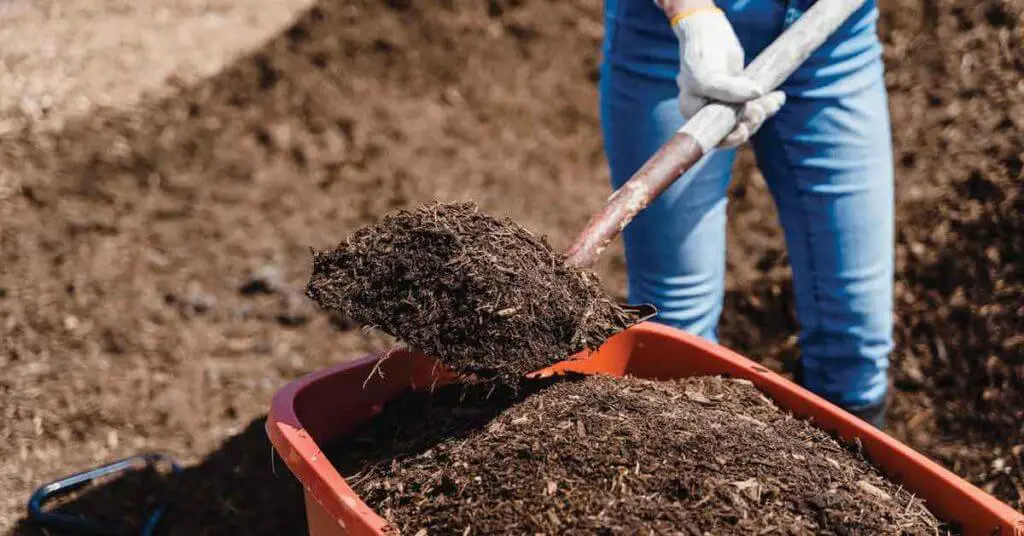
By late summer, some parts of the garden start giving up before you do. Leaves turn yellow, flowers stop showing up, or the fruit just isn’t worth picking. One of the hardest lessons in homesteading in late summer is knowing when to stop pouring energy into a plant that’s clearly finished.
Clearing space isn’t giving up. It’s making room for what’s next, whether that’s a fall crop, a compost pile, or just letting the soil breathe a bit.
How to tell if your plants are “done”
Sometimes it’s obvious: the vines are brown, nothing new has grown in weeks, and the pests have moved in. Other times it’s trickier. A tomato plant might still be green, but all the fruit is splitting or staying tiny.
Here’s what I watch for:
- No new flowers: means no new fruit is coming.
- Leaf damage or disease that’s spreading fast.
- Low yields even with regular watering and care.
- Bolting or bitterness in greens.
One year, I kept babying a row of green beans through August even though they’d stopped producing. When I finally pulled them and planted radishes instead, I got two good harvests before Halloween. I should’ve let go sooner.
Ask yourself: Am I keeping this alive just to say I didn’t quit? Or is it still feeding us?
Should I compost or replant?
Once you’ve cleared a bed, the next question is: now what?
If you’re not planting a fall crop right away, composting is a great call. Chop the plants up, leave the roots in the soil if they’re not diseased, and toss the rest in your pile or bin.
If you’re planning to replant, here’s a quick checklist:
- Remove all leftover roots, especially from squash or tomato plants.
- Add compost or aged manure to the soil.
- Water the bed deeply and give it a day or two to rest before replanting.
One reader from Alabama wrote to say, “I always thought I had to wait weeks between crops. Turns out, if the soil’s healthy, I can replant within days and still get a decent harvest before frost.” That’s been true for me too, especially with quick growers like lettuce or mustard greens.
Where to get compost bins on a budget
If you’re building up more plant waste this time of year, it’s worth finding a spot to put it. You don’t need a fancy system to compost well.
Here are a few affordable or free options:
- Plastic storage totes with holes drilled in the sides
- Used pallets tied together to form a three-bin system
- Wire fencing formed into a circle or square
- Check local Facebook groups or feed stores: I’ve seen folks give away bins they don’t use
A neighbor down the road gave me an old compost tumbler after they upgraded. I wasn’t sure I’d use it, but it’s now where I toss all my trimmings in late summer when the pile behind the shed is too full.
Homesteading in late summer means being honest about what’s working and what’s not. Cutting back plants that are done isn’t wasteful: it’s a smart reset. It clears the way for your next round of crops, gives your soil a breather, and maybe even fills up your compost pile in the process. Letting go, in this case, actually grows more.
Tip #8: Get Smart About Water and Heat Stress
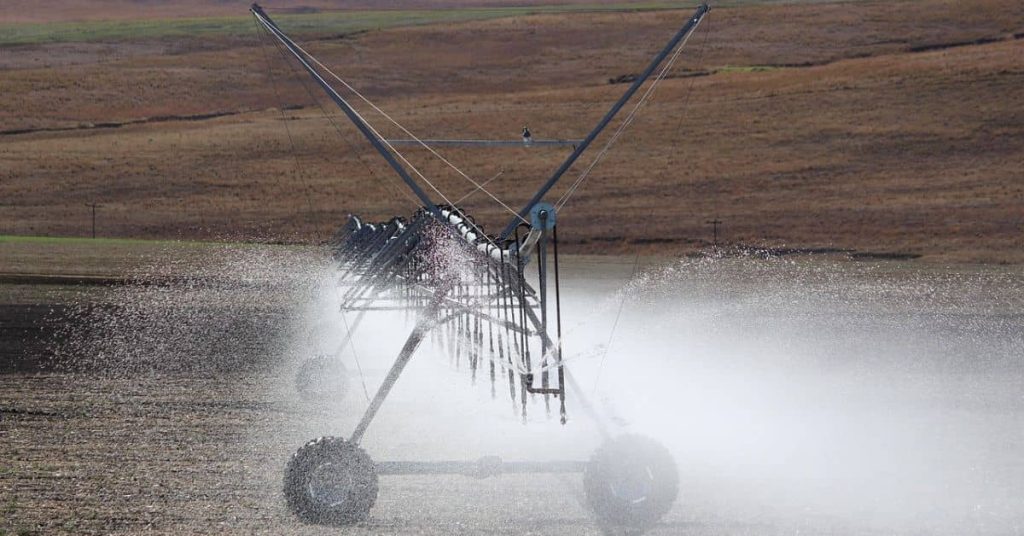
Water becomes more precious than gold in late summer, especially when the sun feels like it’s working overtime. If you’ve ever watched your garden droop by midmorning or seen livestock turn sluggish, you know heat stress is no joke. Homesteading in late summer means learning how to stretch your water and make smart decisions that help plants and animals hold on just a little longer.
This tip is all about real ways to manage water and heat, even when rain’s been scarce and the hose runs more than it should.
Using greywater safely on the homestead
If you’re new to the idea, greywater is gently used water from sinks, tubs, and laundry (as long as you’re using biodegradable soap). I started using greywater to irrigate fruit trees and ornamentals when we hit a dry spell two summers ago. It wasn’t perfect, but it kept them alive without touching our well supply.
Here’s some basics:
- Avoid water from toilets or dishwashers (that’s blackwater).
- Don’t use greywater on root veggies or anything you eat raw.
- Let it cool before dumping it outside.
A friend in New Mexico rigged a system with a five-gallon bucket under her tub drain. She uses that water on her shrubs and rose bushes every evening.
Ask yourself: What water am I already using that could do double-duty?
How to garden without tap water
It’s possible to grow food without relying on a constant tap connection, though it takes a little planning. I’ve had success in dry years by using mulch like it’s going out of style and focusing on crops that can handle neglect.
Tips that worked for me:
- Deep watering every few days instead of daily sprinkles.
- Thick mulch: wood chips, straw, even grass clippings, to trap soil moisture.
- Planting in trenches or swales to catch and hold runoff.
- Watering at dawn or dusk to reduce evaporation.
Last August, I grew okra, sweet potatoes, and cowpeas in a plot that only got hand-watered once a week. Not a huge harvest, but enough to prove it was doable.
California drought-resistant crops
If you’re in the West, or gardening like it, it pays to choose varieties that are bred for heat and drought. Folks in California and Arizona swear by:
- Armenian cucumbers: They thrive in heat and need less water.
- Tepary beans: A desert crop with deep roots and high protein.
- Amaranth: Both a grain and leafy green, super drought-tolerant.
- Roselle hibiscus: Grows like a weed and makes great tea.
Even if you’re not in a dry zone, these crops can help when summer drags on too long.
A gardener in central California told me, “I used to try growing lettuce all year. Now I switch to purslane and malabar spinach by July. No more fighting nature.”
How to survive a heatwave on a small farm
Heatwaves aren’t just uncomfortable. They can wreck your rhythm. I’ve learned to expect one or two major stretches of 100-plus degree days every August, and plan accordingly.
Here’s what helps:
- Water early in the morning, before 9 a.m. if possible.
- Set up emergency shade for animals and crops. Even a tarp strung between fence posts helps.
- Watch yourself, too: heatstroke sneaks up. Keep salt or electrolyte packets handy.
During the 2023 heatwave in Oklahoma, I had to move my milking routine to 6 a.m. The goats were happier, and honestly, so was I. Getting done early gave me time to rest and stay out of the worst heat.
Homesteading in late summer doesn’t mean you need a perfect system. It means getting creative, using what you’ve got, and being just a little smarter than the weather. Whether that’s saving sink water, mulching heavier, or planting things that don’t mind the heat, every little adjustment helps your homestead stay strong through the heat.
Tip #9: Revisit Your Homestead Priorities

By late summer, most of us are running on fumes. The garden’s giving less, the freezer’s getting full, and the to-do list is still longer than we’d like. It’s the perfect time to hit pause and ask yourself what’s actually working, and what isn’t. Homesteading in late summer isn’t just about keeping things going. It’s also about looking back, adjusting, and preparing for the next season with a little more clarity.
This tip is about getting honest, cutting the fluff, and making your homestead serve you better.
What are the downsides of homesteading?
This lifestyle isn’t all pretty pantry shelves and sunset chores. Especially by August, the cracks start to show.
Some real downsides folks talk about:
- Constant maintenance and never-ending projects
- Feeling isolated or overwhelmed
- Struggles with health, especially in heat-heavy regions
- Burnout from trying to do it all
I’ve been there. I once tried to grow and preserve everything we ate for three months. By mid-September, I was sick of tomatoes, tired of canning, and my kids wanted cereal again.
It helped to talk to other homesteaders who said the same thing. One woman in Kansas told me, “I thought I had to prove something by growing every bite. Now I just grow what we love and trade for the rest.” That mindset shift saved my sanity.
Ask yourself: Is this still working for me, or am I just stuck in survival mode?
Stretching food during price hikes
Food prices are all over the place these days. Homesteading can help, but only if we’re thoughtful about what we grow, store, and use.
Some tricks that help stretch what you’ve got:
- Eat what’s in season. When okra is exploding, use it five ways.
- Freeze your extras in 1-cup portions for quick use.
- Use “scrap stock” from veggie trimmings or chicken bones.
- Make small batch soups or stir-fries with odds and ends.
I started keeping a “use it or lose it” basket in the fridge. If something’s headed south, it goes there first. That one shift cut my waste in half.
Bulk buying for canning: does it save money?
It depends. Bulk buying works best when:
- You know how to use it all
- You’ve got storage space (freezer, pantry, or cellar)
- You’re not guessing on quality or variety
Sometimes, buying 40 pounds of peaches makes sense. Other times, the local produce stand might sell them cheaper by the box than the co-op.
I bought 50 pounds of tomatoes last August and canned 36 quarts of sauce. It was messy but worth every minute. That sauce got us through the winter and saved us hundreds on store-bought jars.
Tip: Split bulk orders with a neighbor or friend to avoid waste and burnout.
Scrappy meal planning from your own pantry
Late summer is a great time to start cooking down your stores. I like to do a pantry inventory in September, take stock of what we’ve got, what we’re actually eating, and what’s just been sitting.
Ask yourself:
- Do I have a bunch of one thing I’m not using?
- Can I plan three meals around the garden instead of the grocery store?
- What can I batch cook now and freeze for later?
One week I made three versions of zucchini muffins just to use up a crisper drawer full. I froze two batches and fed the rest to the kids (and the chickens). Felt good not to waste it.
Homestead food security: what matters most?
The fancy stuff is nice: home-canned peaches, hand-ground flour, but it’s the basics that keep you fed.
Here’s what I focus on when food costs rise or weather’s iffy:
- Reliable protein (eggs, beans, pantry tuna or chicken)
- Hearty vegetables (squash, potatoes, carrots)
- Simple carbs (rice, oats, tortillas)
- Preserved extras that add flavor and variety (salsas, jams, pickles)
A fellow homesteader in Indiana said, “I stopped worrying about making my pantry pretty and started focusing on what actually feeds us.” That line stuck with me.
Homesteading in late summer is a good time to ask what’s feeding your body, your home, and your peace of mind. You don’t have to grow everything. You don’t have to be perfect. Just take stock, make a few tweaks, and remind yourself why you started this in the first place. Priorities shift, and that’s okay.
Tip #10: Know the Rules Before Expanding Your Flock

Adding animals to your homestead can be exciting, but it’s crucial to understand the legal landscape before doing so. Homesteading in late summer often brings a desire to expand, but local regulations can vary widely.
Is Homesteading Still Legal in the U.S.?
Yes, homesteading is legal across the United States, but the specifics depend on your location. While the federal Homestead Act was repealed in 1976 (except in Alaska, where it continued until 1986), modern homesteading is more about lifestyle choices than land claims. However, local zoning laws and regulations can impact what you can do on your property.
Goat Rules in Backyards: What’s Allowed Where
Goats can be a valuable addition to a homestead, providing milk, meat, and weed control. However, keeping goats isn’t permitted everywhere. Regulations vary by city, county, and even neighborhood. For instance, in Seattle, only pygmy, dwarf, and miniature goats are allowed, and they must be dehorned and neutered.
In Montgomery County, Maryland, goat ownership depends on lot size, with one full-sized goat typically allowed per acre. Before acquiring goats, check your local ordinances to ensure compliance.
How to Find Your Town’s Livestock Laws
- Check Local Zoning Codes: Visit your city or county’s official website and search for zoning or animal control ordinances.
- Contact Local Authorities: If information isn’t readily available online, call your local zoning office or animal control department.
- Consult State Resources: Some states provide guidance on animal laws; for example, the Texas State Law Library offers resources on backyard animals.
- Use Online Databases: Websites like Municode compile municipal codes, which can be helpful in researching local laws.
Understanding and adhering to local regulations ensures that your homesteading efforts remain lawful and neighbor-friendly.
Homesteading in late summer is a time of reflection and planning. As you consider expanding your flock, take the time to research and understand the legal requirements in your area. This diligence will help you build a sustainable and compliant homestead.
Tip #11: Connect With Others (You’ll Be Glad You Did)
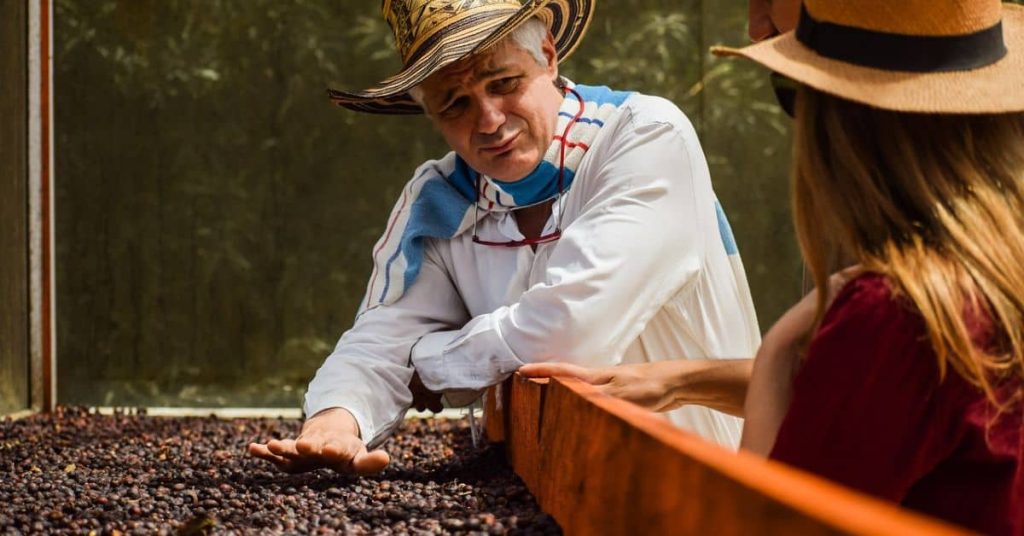
Homesteading in late summer can feel a little lonely. The pace slows down just enough to notice that the weeds are still winning and the neighbors have air conditioning. But this season, more than any other, is a good reminder that you don’t have to figure it all out alone.
This tip is about finding your people, whether they live next door or halfway across the country.
Reddit homesteading in late summer
If you’re not on the r/homestead subreddit yet, it’s worth checking out. What I like about it is how unpolished it is: folks posting real photos of their squash bug disasters, failed watermelon attempts, or makeshift drip systems made out of soda bottles.
A few recent threads I bookmarked:
- “What’s still worth planting in Zone 7 this late?”
- “How do you keep going when August hits and you’re burned out?”
- “Built this chicken tractor out of scrap lumber: good enough?”
You don’t need to post or comment right away. Just scrolling through what others are dealing with can give you ideas, reassurance, or a good laugh on a hard day. It’s like a group chat for the dirt-under-your-nails crowd.
Ask yourself: Am I making this harder than it needs to be by trying to do it solo?
YouTube late summer garden tour (2025 edition)
There’s something encouraging about seeing what other gardens look like in real time. YouTube is full of late summer tours from small backyard growers to big acreage folks. And it’s not all pristine rows and perfect tomatoes either.
Search for “late summer garden tour 2025” and you’ll find:
- Walk-throughs of what’s still producing
- Tips on what’s failed and why
- Honest updates about burnout, pests, or changing plans
One homesteader from North Carolina showed how her peppers bounced back after she trimmed them hard in July. Another in Idaho talked about shifting to container gardening because her raised beds dried out too fast.
Sometimes you see something small: a trellis idea or how someone labeled their herbs, that solves a problem you didn’t even know had a fix.
How other folks are managing August heat and harvest
I wasn’t sure this would help me, but asking around at the local feed store last summer actually got me more advice than I expected. One older gentleman told me he doesn’t even bother picking green beans after 10 a.m. because the vines get too hot and snap. Another woman shared how she only processes tomatoes at night when it’s cooler, using an old electric roaster on her porch.
That kind of real, lived-in advice? You won’t find it in books.
Here are a few other ways to hear how folks are handling late summer:
- Local Facebook gardening or canning groups
- Small town extension office newsletters
- Church or co-op bulletin boards
- State fair booths and harvest contests
You might even make a friend, or at least find someone else who understands why your goats are being weird this week.
Homesteading in late summer is hard enough without going it alone. Whether you’re sharing wins or looking for advice, connecting with others makes this life feel a little more doable. You don’t need a big community: just a couple folks who get it can make all the difference.
#BonusTip: Homesteading from Scratch? Start Simple
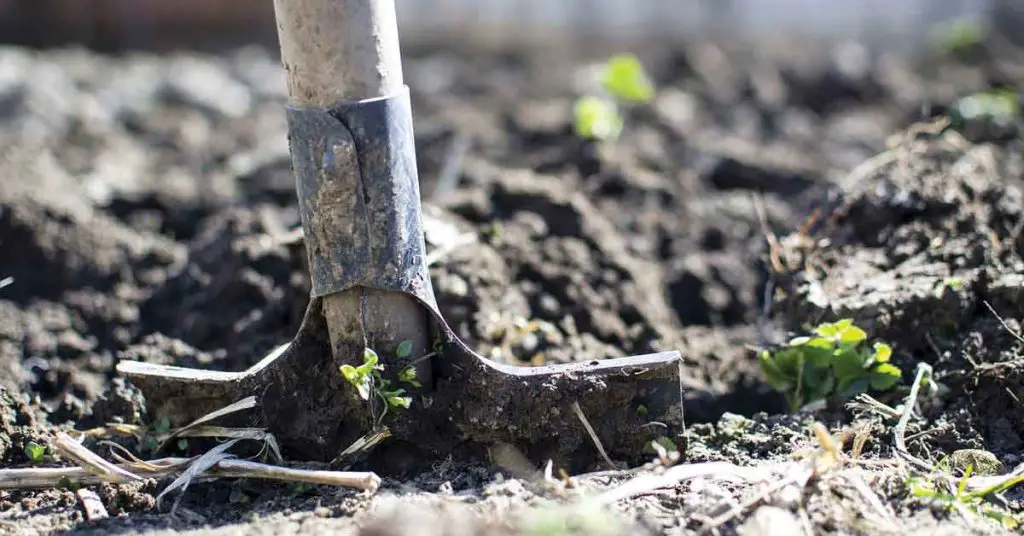
Starting a homestead in late summer might sound backwards, but honestly, it can be a smart time to get going. You’ve still got enough daylight to get your bearings, the garden’s slowing down, and cooler weather is coming to take the edge off. Homesteading in late summer doesn’t have to be overwhelming, especially if you keep things simple and focus on what you can realistically handle.
This bonus tip is for anyone just starting out, or for folks scaling back and getting back to basics.
How to start homesteading from scratch
If I were starting fresh again, here’s what I’d do:
- Pick one thing to grow, even if it’s just a pot of herbs or a bed of lettuce.
- Learn how to compost: a pile in the corner of the yard works fine.
- Start keeping notes about what you’re eating, wasting, or wanting more of.
I started with chickens and three tomato plants. Nothing fancy. I figured if I could grow a sandwich topping and scramble some eggs, I was off to a decent start.
Don’t wait for spring to “really” begin. If you’ve got a patch of dirt and the itch to try, now’s a great time to experiment.
Is backyard homesteading easy for beginners?
Short answer: sometimes.
Backyard homesteading can be manageable if you don’t go too big too fast. The trick is ignoring the pressure to do everything all at once. Focus on learning, not achieving.
Ask yourself:
- What do I actually want to get out of this?
- How much time do I have each week?
- Can I set up one small win first, like a raised bed or compost bin?
A couple in Georgia I talked to last year started their backyard homestead with just three containers and a rabbit hutch. Now they’ve got bees, a greenhouse, and a barter network with neighbors. But they built it up over three years, step by step, season by season.
What to have on a homestead when you’re just starting out
You don’t need much to get going. Here’s a list of stuff that actually helped me in my first year:
- A basic shovel and hand trowel
- Buckets for hauling water, weeds, and feed
- A hose with a sprayer (or a rain barrel if you’re off-grid)
- Something to compost in (a bin, a pile, or an old trash can with holes)
- A journal or notebook for tracking what worked and what didn’t
Optional but handy:
- Chickens if your town allows them
- A timer for watering
- A sun hat you’ll actually wear
Easy homesteading projects that build confidence
Sometimes all you need is a win. Here are a few projects I’ve seen go over well with beginners:
- Grow radishes or greens: they’re fast, forgiving, and satisfying.
- Make one jar of refrigerator pickles: no fancy tools required.
- Start a sourdough starter or yogurt batch: low-cost, low-risk.
- Build a raised bed from pallet wood: YouTube’s full of how-tos.
- Dry herbs from the garden: hang them upside down and call it a win.
One friend in Ohio told me, “The first time I made butter from cream I skimmed myself, I felt like a wizard.” That’s the kind of confidence builder that keeps you going.
If you’re homesteading in late summer for the first time, just start. Pick one project. Ask one neighbor a question. Join one group. Try one recipe with what you’ve already got.
Simple is not just okay: it’s wise. You’ll learn faster, waste less, and probably enjoy it more.
Recap: Homesteading in Late Summer With Intention
Late summer can sneak up on you. One minute you’re buried in tomatoes, the next you’re watching the days shorten and wondering where all that time went. This part of the year always asks for something different: more patience, more letting go, sometimes just more shade.
Homesteading in late summer isn’t about perfection. It’s about knowing when to dig in and when to let it rest. It’s about taking stock without beating yourself up. So before the season fully slips into fall, here’s a moment to pause, reflect, and breathe.
What late summer taught me (again) this year
Every year teaches me something. Sometimes it’s how to do better with squash bugs. Other times, it’s how to stop pushing so hard.
This year, late summer reminded me to:
- Trust what I already know instead of second-guessing every decision.
- Adapt to what nature gives, whether that’s a heatwave or a slow tomato year.
- Give myself permission to be done when enough really is enough.
I wasn’t sure if I’d keep the garden going through August this time. Between family stuff and dry spells, it felt like too much. But then the peppers surprised me, and the bees kept working, and I thought, “Okay, maybe just a few more weeks.”
Final thoughts on homesteading in late summer
If you’re still hanging in there, tending, preserving, planning ahead, you’re doing the work that matters. It may not always feel like much, but small choices now make a big difference later.
A neighbor of mine in Arkansas always says, “August is when you find out what kind of homesteader you are.” I used to roll my eyes, but she’s right. It’s not the planting that tests you. It’s the sticking with it when everything’s too hot, too dry, or too much.
If all you did this season was feed your family a few good meals from your yard or make one smart change for fall, that’s something to be proud of.
How to do “enough” without doing it all
You don’t have to do everything to call it a win. That took me years to learn.
Here’s what helps me feel like I’ve done enough:
- One thing prepped (a bed cleared, seeds ordered, compost turned)
- One thing saved (frozen okra, canned salsa, dried basil)
- One thing enjoyed (dinner outside, watching chickens, quiet time in the garden)
Ask yourself: What actually fills me up, and what can I let go of for now?
Share your experience: we’re all still learning
Homesteading is a long game. No one has it all figured out. So if something worked for you this year, or if something flopped and taught you a better way, don’t keep it to yourself.
Whether it’s a new shade trick, a shortcut for preserving, or just a funny chicken story, I’d love to hear it. Drop your tip or your favorite takeaway from this season in the comments.
What tip helped you most this season? Drop it in the comments
That one idea, shortcut, or hard-won lesson might be just what someone else needs to hear. You never know who’s reading this with dirt under their nails and a half-wilted zucchini plant wondering if they’re doing it right.
If you’ve been homesteading in late summer, you’re part of this big, dusty, hopeful tribe. And you’re not alone. Let’s keep learning together.
To help you continue your homesteading journey, here are a couple of related articles from that offer additional insights:
- Homesteading in Mid-Summer: 11 Smart Tips to Help Your Homestead Thrive Through the Hottest Months (Discover practical advice on managing your homestead during the peak summer heat, including strategies for water conservation and crop care.)
- Homesteading in Texas: Real Advice for Starting and Sustaining a Homestead Here (From weather quirks to legal considerations, this guide is full of state-specific tips that help Texans make smarter homesteading choices.)
Feel free to explore these articles to gain more knowledge and tips for successful homesteading.
Disclaimer: The information provided in this article is for general informational purposes only and is not intended to be a substitute for professional advice. The author of this article does not claim to be an expert in homesteading and the information provided should not be relied upon to make decisions about your own homesteading journey. Please do your own research and consult with a qualified professional before making any decisions about your homestead.
Share via:
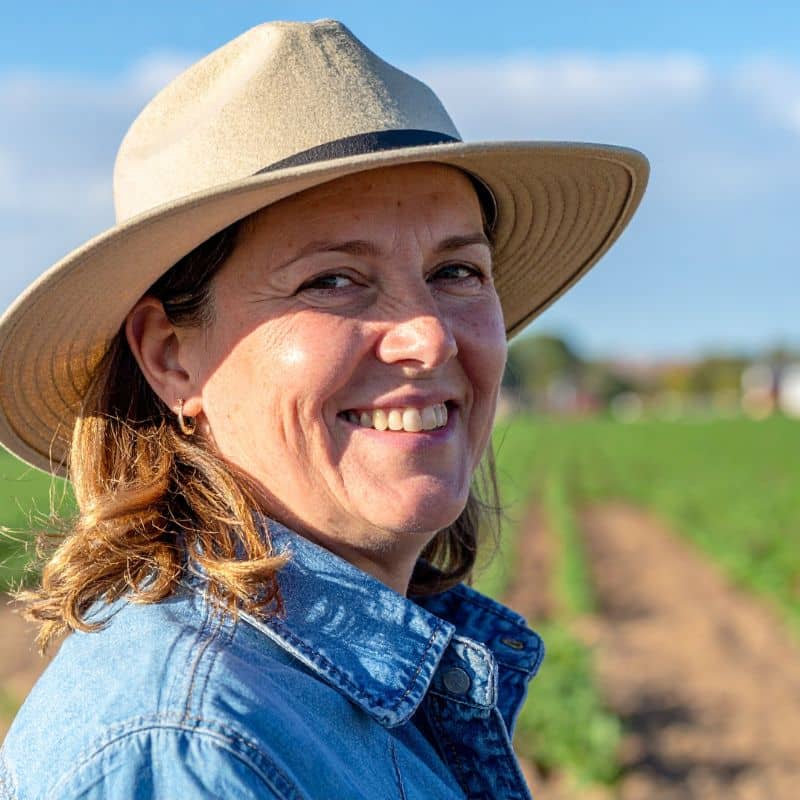
Co-Founder at Homesteading Simple | Horticulture & Sustainable Living Educator | 25 Years in Practical Homesteading

